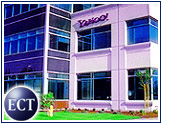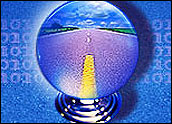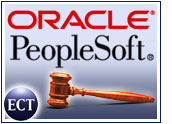
A little over a year ago, PricewaterhouseCoopers (PwC) released a study on e-tailers. The study found that most of the new features being added to Web sites did little to turn visitors into buyers.
But a year is a long stretch in Internet time. Since the study was published, have e-tailers put into practice what seemed to be lacking? Analysts and usability experts say yes, but they also suggest caution.
Online retailers finally seem to be learning that a bare-bones approach tends to attract more customers than one that favors bells and whistles. But retailers are finding that they need to keep tinkering if they want to stay afloat.
Search Me
In its study, PwC noted that 77 percent of online consumers reported they had used a search function while shopping, and most said they were satisfied enough with the results to use such features on a regular basis.
Effective search functionality ranked as the most important online shopping feature for 43 percent of respondents. It seems that some things do not change, Jupiter analyst Matthew Berk told the E-Commerce Times. Search engine use is still a crucial part of site navigation.
“E-tailers have begun to look at what kind of search engine implementation is right for their sites,” Berk said.
“Over the past six months or so, they’ve taken the time to develop their technology to be more usable,” he added. “By taking a hard look at their applications and technology, especially with search functionality, they’re improving.”
No Cure-All
Search is not a cure-all, however. User Interface Engineering, a usability firm that examines top sites, reported that high-level Web sites that attract customers through good search capability, like Amazon.com, are still limited by user input.
For example, if a user types “Madame Bovary” into Amazon’s search engine, the ensuing results will probably leave the consumer happy to be shopping there.
A less clear search, such as “unfaithful wives in fiction” or “swooning French lady” will lead to less defined results and lower satisfaction.
Function Over Form
The PricewaterhouseCoopers study also suggested that e-tailers should offer better product images: Forty-four percent of respondents said that close-up product images would increase their likelihood of buying.
Incorporating better design with simplicity has been catching on in the past year, with e-tailers leading the way.
Forrester analyst Harley Manning told the E-Commerce Times, “Some companies have not only realized that design is critical, but they have begun to be a lot more disciplined about it.”
Manning cited Lands’ End as an example of a successful marriage between e-commerce and design.
“When you begin to understand customers and the medium better, that’s when you start changing design tactics to meet user goals,” he said.
Hire Learning
The ability to trim extraneous parts of a site is the purview of seasoned e-commerce experts. Therefore, Berk noted, the current job market might actually benefit e-tailers.
“As companies cycle through employees right now, e-tailers can hire people who have been around for seven or eight years, which is about how long e-commerce has been around,” he said.
He noted that novice Web designers are often quick to play with jazzy features and dabble in untested designs, but designers and engineers with more experience understand how design impacts usability.
“The more experienced people know that navigation should look or operate a certain way,” Berk added. “There are now stronger people who know how sites should operate, and that’s going to make a big change in the next few years.”
What Shoppers Want
Another area in which e-tailers have improved in the past year is in recognizing what works and what does not, Berk said. And by counting dollars, not eyeballs, they have advanced in terms of operational ability.
“The great thing you can say about e-tailers,” Berk noted, “is that they can present the best-case scenario for how to tie a site to the bottom line. They’ve begun to recognize that modified display pages and functionality have a direct impact on revenues.”
He added, “There is a whole culture of accountability now, as people are associating changes with how the site performs. And that’s just great.”














































good article.
most innovative and constantly improved site:
apple.com
(i don’t buy their products, but i enjoy perusing
their site and offerings).
You want tips? There are lots of great websites and books on the subject. (1) Check out http://www.useit.com/. (2) Go to Amazon.com and search for "usability." Look for Steve Krug’s "Don’t Make Me Think," most books by Jakob Nielsen, and "Information Architecture for the World Wide Web" by Rosenfeld & Morville are all excellent.